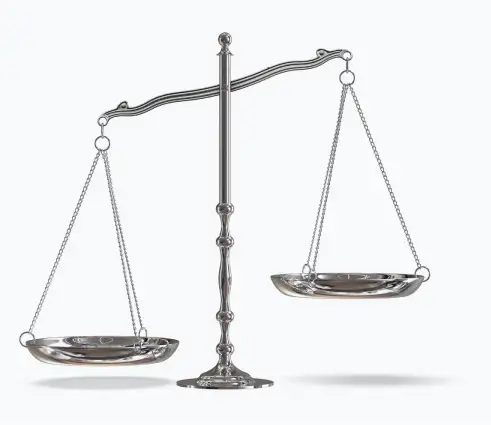Відповідальність за поширення недостовірної інформації в Інтернеті визначається змістом таких відомостей і наслідками їх оприлюднення. Вона може бути цивільною, адміністративною або кримінальною зазначає IT адвокат АО “Бачинський та партнери”.
Цивільна відповідальність передбачає спростування неправдивої інформації та відшкодування завданої шкоди. Адміністративна — накладає штрафи чи виправні роботи за поширення неправдивих чуток, що спричинили паніку або порушення громадського порядку. Кримінальна відповідальність настає у випадках, коли поширення таких відомостей може спричинити загибель людей або інші тяжкі наслідки. При цьому слід зазначити, що наклеп більше не вважається кримінальним злочином.
Не так давно ми публікували деякі юридичні поради у статті «Як захистити інтелектуальну власність в мережі Інтернет?», у якій розглядалися дотичні (до поставленого сьогодні) питання. Але актуальність спростування недостовірної інформації у IT-сфері така, що, мабуть, декількома статтями не обмежиться. Поступово Інтернет-право завойовує і Україну, хоча у більшості випадків, це здійснюється руками не законодавчої гілки влади, а судової.
Способи боротьби з поширенням недостовірної інформації
Існують досудові заходи як претензія чи вимога про спростування. Ще може бути публічна відповідь, заява, офіційне повідомлення. Дієвим залишається судовий захист. Якщо не допомагає, треба спробувати звернутися до платформ та ресурсів. Можна написати скарги до адміністрацій соцмереж і також запити на видалення контенту. Захист на випередження передбачає укладання угоди про нерозголошення.
Захист прав через суд
Напевно, більшість юристів активно приймали обговорення у резонансному рішенні суду щодо ТОВ «Видавнича Організація «Юстініан» та ПП «Українська Правда» (справа 2-2561/12). Основні проблеми, що піднімаються у цьому судовому процесі – це чи відповідає сайт за публікації інших користувачів (незалежно у якому вигляді – статей чи просто коментарів), яка межа відповідальності Інтернет ресурсів за це, та як можна суду доводити наявність негативних публікацій в Інтернеті. Судова влада «вирішила» усі ці складні питання.
Так, виявляється, що власник домену і є власником веб-сайту та несе правову відповідальність за всі матеріали, розміщені на ресурсі, оскільки завдяки власнику було створено технологічну можливість та умови для розміщення та поширення недостовірної інформації. Так, згідно постанови Пленуму Верховного Суду України «Про судову практику у справах про захист гідності та честі фізичної особи, а також ділової репутації фізичної та юридичної особи» відповідачем у справах де є поширення неправдивої інформації в мережі Інтернет є автор статті та власник веб-сайту. Позивач сам повинен встановлювати автора статті та власника веб ресурсу для подачі позовної заяви. У випадку неможливості знайти автора статті або місця проживання (місцезнаходження) відповідачем у справі є та особа в якої у власності знаходиться веб-сайт.
З одного боку це, наче би, встановлює обов’язкову цензуру, покладає обов’язок на власників сайтів відповідати за все на світі – і в цьому негатив. Але з іншого боку, плюс в тому, що дійсно є маса випадків, коли на особу виливають анонімно тонни бруду, а відмитися немає як. Адже тепер Інтернет, напевне, ефективніший за інші способи поширення інформації, і особу можна морально «поховати», а хто крайній встановити було важко, та й оправдовуватися досить неприємно.
Отож, спростувати таку неправдиву інформацію не дуже й важко – через суд, бо навіть якщо встановити автора допису складно, то встановити власника домену набагато легше – він і буде відповідати за все, адже в нас працює презумпція добропорядності (негативна інформація, поширена про особу, вважається недостовірною, якщо особа, яка її поширила, не доведе протилежного). Хоча звичайно ефективніше перед початком судових тяжб спробувати все ж таки за допомогою юристів врегулювати ситуацію мирно, адже швидше за все, більшість власників сайтів просто приберуть її, щоб не мати проблем з судами.
Як довести факт поширення недостовірної інформації?
Якщо адміністратор сайту видалить таку недостовірну інформацію як особі довести, що така інформація все ж таки була надрукована. Ми вже раніше писали, що суди досить легковірно приймають прості видруки таких веб-сторінок (так, у судовій справі ТОВ «ІСКРА Прес» інформація була розповсюджена на сайтах та в газетах, а ось у справах приватних осіб проти Партії регіонів, інформація була розміщена виключно на сайті партії; так само як і у справі ПАТ «Автокразбанк» і суду цього було достатньо). Ця ситуація повторилася і у рішенні щодо «Юстініану». Суд виходив з того, що він не є фахівцем, щоб перевіряти достовірність роздруківки з веб-сайту, а відповідач не заявляв клопотань суду щодо призначення експертизи по даному питанню. Отож, виходить, що не позивач, а відповідач (власник сайту) повинен доводити, що роздруківка з сайту не справжня (хоча з рівнем сучасних технологій зробити такий видрук досить легко).
Ображеним слід не забувати, що у таких справах скорочено позовну давність до 1 року (згідно ч.2 ст. 258 ЦКУ “У цьому разі позовна давність обчислюється від дня поміщення цих відомостей у засобах масової інформації або від дня, коли особа довідалася чи могла довідатися про ці відомості)”. Тобто можна довести, що особа, чиї права порушено дізналася про таке порушення не в момент публікації, а пізніше. А власникам сайтів слід уважно модерувати свої ресурси або взагалі обмежувати можливість публікацій третім особам.
Яка відповідальність за розповсюдження фейків
Що грозить власникам сайтів за публікацію негативної інформації. Перш за все, досить неприємна справа – публікація спростування, яке постраждала сторона може попросити опублікувати у найрейтинговішому місці (головній чи іншій високо-відвідуваній сторінці), що звичайно не додасть репутації сайту та ще й забирає робочі площі, які могли бути використані під щось інше, зокрема, і Інтернет рекламу. Окрім цього, суд може зобов’язати власника сайту (домену) відшкодувати ще й моральну шкоду (на практиці суми коливаються в обсягах дві-чотири тисячі гривень). Основна рекомендація – це все ж таки модерувати свої ресурси. Але що робити форумам? Там, що не судження – то оціночне і, ймовірно, неправдиве. Тут вже останні повинні діяти на власний страх і ризик.
Заборона на розповсюдження недостовірної інформації
В Україні для заборони недостовірної інформації діє вимога про спростування. Другий варіант – захист честі, гідності та ділової репутації через суд. Важливо! Позов має бути чітко обґрунтований
У 2025 році дієвою залишається реакція через платформи й ЗМІ. Тобто багато онлайн-платформ мають власні інструменти для боротьби з фейками або приниженням репутації. Що стосується заборони через суд, ще до ухвалення рішення по справі, можна добитися тимчасової заборони на розповсюдження інформації.
АО «Бачинський та партнери» допоможе вам ефективно захистити свою репутацію, якщо в інтернеті поширено недостовірну або образливу інформацію. Він зможе юридично грамотно скласти вимогу про спростування, звернутися до адміністрації сайту або соціальної мережі, а за потреби — ініціювати судовий процес, щоб змусити порушника публічно вибачитися, видалити наклепницький контент і компенсувати моральну шкоду.



